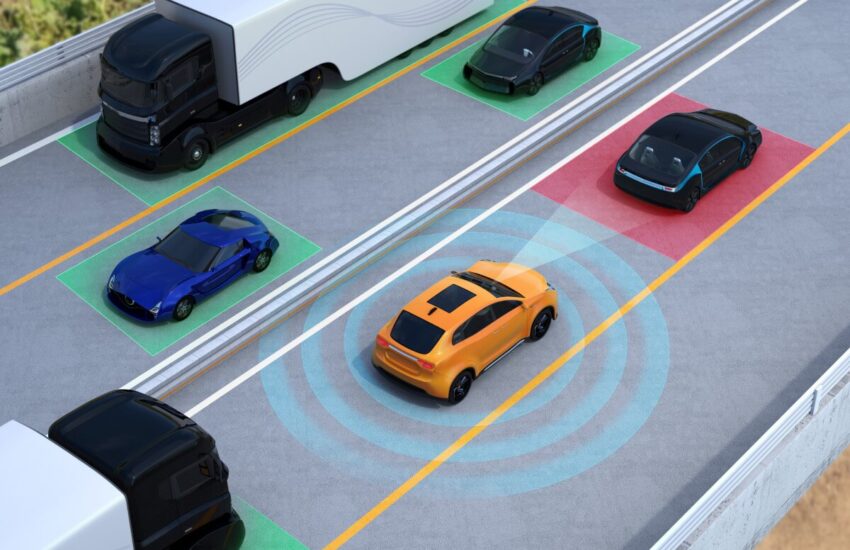In the realm of automotive innovation, safety stands as an ever-evolving frontier. Over the decades, advancements in new car technology have revolutionized the way we approach vehicle safety, making cars not only more secure but also more equipped to handle unexpected situations on the road. In recent years, the automotive industry has witnessed a surge in groundbreaking safety features that aim to mitigate accidents, protect occupants, and ultimately, save lives. Let’s explore some of the latest innovations that are reshaping the landscape of new car safety features.
Advanced Driver Assistance Systems (ADAS):
ADAS comprises a suite of technologies designed to assist the driver in the driving process. These systems utilize sensors, cameras, and AI algorithms to enhance situational awareness and provide assistance when needed. Some common features include:
- Adaptive Cruise Control (ACC): Automatically adjusts the vehicle’s speed to maintain a safe distance from the vehicle ahead.
- Lane Departure Warning (LDW) and Lane Keeping Assist (LKA): Alerts the driver if the vehicle drifts out of its lane and may even autonomously steer the vehicle back into its lane.
- Forward Collision Warning (FCW) and Automatic Emergency Braking (AEB): Detects potential collisions with vehicles or pedestrians ahead and can automatically apply the brakes to prevent or mitigate an impact.
Collision Avoidance Systems:
These systems are designed to prevent accidents by actively monitoring the vehicle’s surroundings and taking corrective actions if necessary. Some vehicles are equipped with:
- Blind Spot Monitoring (BSM): Alerts the driver if there is a vehicle in their blind spot, reducing the risk of side-swipe accidents during lane changes.
- Rear Cross-Traffic Alert (RCTA): Warns the driver of approaching vehicles or pedestrians when reversing out of parking spaces, helping to prevent collisions in busy parking lots.
- Surround View Cameras: Provides a 360-degree view of the vehicle’s surroundings, aiding in parking and maneuvering in tight spaces.
Pedestrian Detection Systems:
With the rise in pedestrian fatalities, especially in urban areas, automakers have prioritized the development of pedestrian detection systems. These systems use sensors and cameras to detect pedestrians in the vehicle’s path and can initiate braking or provide alerts to the driver to avoid a collision.
Vehicle-to-Vehicle (V2V) Communication:
V2V communication enables vehicles to exchange information with one another, such as speed, position, and direction. This technology allows vehicles to anticipate and react to potential hazards more effectively, reducing the likelihood of accidents, particularly in situations with limited visibility or adverse weather conditions.
Advanced Structural Design:
In addition to technological innovations, advancements in materials and structural design have significantly enhanced vehicle safety. High-strength materials such as ultra-high-strength steel, aluminum, and composite materials are being used to construct vehicles that are not only lighter but also more robust in crash scenarios. Moreover, innovative designs such as crumple zones and reinforced passenger compartments help to absorb and dissipate crash forces, minimizing the risk of injury to occupants.
Driver Monitoring Systems:
Recognizing the importance of driver attentiveness, many vehicles now come equipped with driver monitoring systems that use cameras and sensors to monitor the driver’s behavior. These systems can detect signs of drowsiness or distraction and issue alerts to prompt the driver to refocus on the road.
Autonomous Driving Technologies:
While fully autonomous vehicles are still in the development stage, semi-autonomous driving technologies are already making their way into mainstream vehicles. These systems, such as Tesla‘s Autopilot and Cadillac‘s Super Cruise, can take control of certain driving tasks under specific conditions, offering enhanced safety and convenience.
Wrapping It Up
The automotive industry continues to push the boundaries of safety innovation, with an array of advanced technologies aimed at making our roads safer for everyone. From advanced driver assistance systems to pedestrian detection technologies, these features not only help prevent accidents but also provide drivers with greater confidence and peace of mind behind the wheel. As these technologies become more widespread and refined, we can look forward to a future where road accidents are increasingly rare occurrences, and the journey becomes as safe as the destination.
AutoByPayment.com offers accurate estimates of new and used car loan payments based on self-selected credit score, current rebates, down payment, and trade equity or negative equity, without customers having to provide their personal identifying information such as email and phone.
